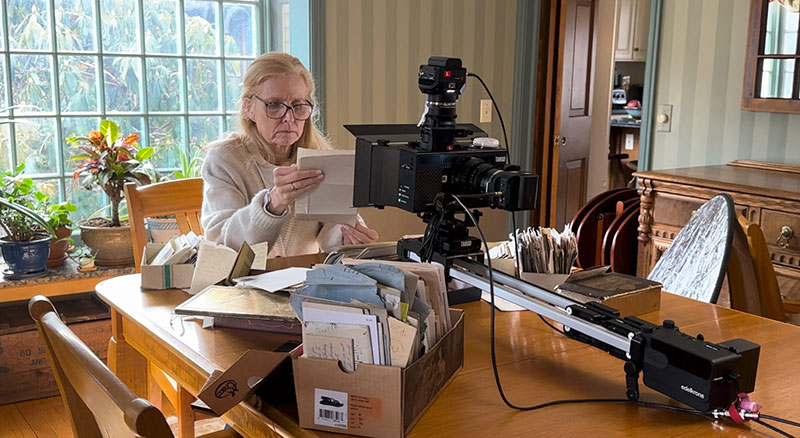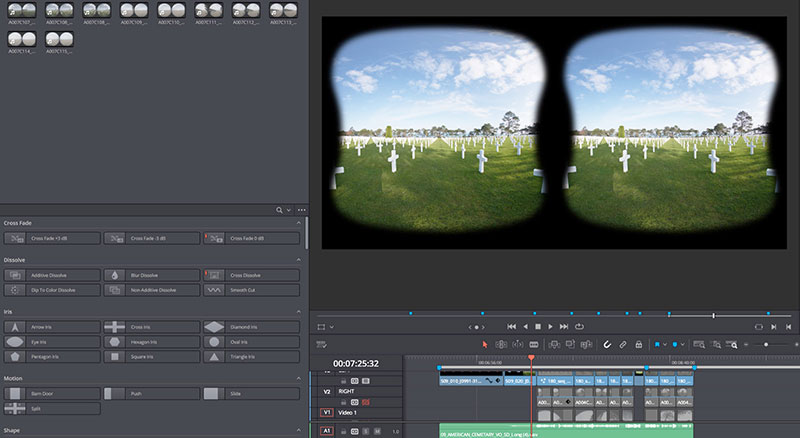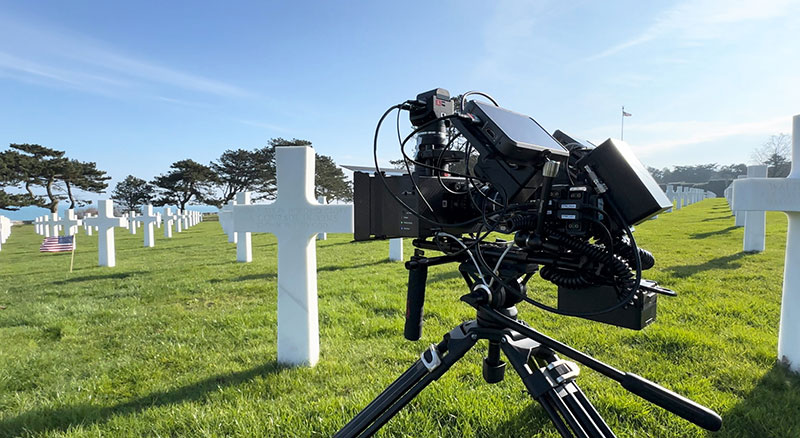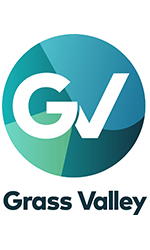TARGO studio developed spatial image capture and unified post production workflows using Blackmagic equipment to produce their immersive documentaries for Apple Vision Pro.

Director Chloé Rochereuil is exploring and recording her father’s history on D-Day as a combat camera operator, 80 years after World War II came to an end. Her film D-Day: The Camera Soldier is a new documentary produced by production company TARGO, in collaboration with TIME Studios for Apple Vision Pro.
TARGO studio, specialists in immersive documentaries, approached the film as a narrative that moves between various formats, using immersive as part of an evolving kit of storytelling tools. As always, the goal was to bring audiences closer to the film’s emotional and historical truth. To achieve this, the filmmakers have blended 2D archival footage, spatial and immersive video, and 3D interactive techniques.
Bridging Formats
“We’re now able to ask ourselves which medium is best suited to tell specific parts of the story,” said Chloé, who is also a TARGO cofounder. “Previously, we worked in separated stages – 360 video, stereoscopic video, interactive scenes – each format operating independently. This project bridges those formats and allows us to choose the one that best serves the narrative as we go.”

That approach shaped every aspect of production, from developing a compact custom camera rig to unifying their post production pipeline. “One of the first challenges we faced was finding the right acquisition equipment. We needed something lightweight, high resolution and robust enough to follow life as it happens without disrupting it,” noted Producer Victor Agulhon, also a TARGO cofounder.
Production Times Two
Traditional high resolution 3D rigs are large and cumbersome, making them difficult for real world documentary work. For D-Day: The Camera Soldier, TARGO developed a miniaturized rig based on two Blackmagic Micro Studio Camera 4K G2s to capture the spatial footage.
“These cameras gave us the right balance between cinematic image quality and a compact, lightweight form factor,” said Victor. “They were small enough to mount on a light beam splitter, allowing us to move the system easily and stay mobile indoors, outdoors and even on beaches.”

Ultimately, it came down to image quality, form factor and sensor synchronization. This last factor is essential for a stereo rig – image capture for each sensor must be triggered to occur simultaneously. “The Micro Studio 4Ks were the only cameras that brought all three together in the way we needed,” said immersive cinematograph Mael Joanas. “Likewise, the Blackmagic cameras gave us reliable genlock in a small form factor without needing AC power, a crucial factor for us.”
The compact rig opened several creative possibilities. “We could film in tight spaces – for instance between pieces of furniture, in basements and close to our subjects,” Chloé said. “One standout example is a beautiful shot that imitates the effect of a dolly zoom, using the cameras mounted on sliders. We could only make these choices because the rig was so lightweight and compact.”
Victor also said, “We wanted to fully stretch the Vision Pro’s image reproduction capabilities and approach real world fidelity. That priority shaped the decision to use Blackmagic equipment, recording the cinematic sharpness and depth needed to bring the immersive experience to life.”

All in One Place
This was also TARGO’s first project on which it could bring the entire workflow together in DaVinci Resolve Studio. “Unifying our video pipeline for edit, conform, grade and delivery in one tool reduced the variables and centralized our process around a familiar skill set,” said Mael, the DoP.
A key advantage was DaVinci Resolve Studio’s native support for stereoscopic 3D workflows. “Historically, our stereo alignment pipeline would have been scattered across multiple tools,” he said. “Through Resolve, we not only reduced the need for round tripping, but also improved how we collaborated.”
That ability to edit stereoscopic footage using a traditional 2D workflow proved crucial. “We were essentially operating in a 2D environment, using stacked left and right images that could be synced with a few clicks,” said Mael. “It allowed us to edit stereo video using a mono display while still exporting in side by side formats for delivery.”
TARGO sees their documentary as a step toward immersive storytelling as a new genre. “We are most proud of how naturally it all came together, both for the story and the viewer,” said Chloé. “We succeeded in unifying multiple formats, while staying grounded in a deeply human narrative.” www.blackmagicdesign.com




